By Humberto Poidomani, Latin American Contemporary Artist
Introduction
In the ever-evolving landscape of contemporary art, digital print has revolutionized how artists express themselves. As a Latin American artist deeply rooted in mixed media art, I have witnessed firsthand how technology intertwines with traditional art forms, giving rise to innovative techniques and limitless possibilities.
Understanding Digital Print in Art
The Emergence of Digital Print
The digital print medium emerged as a response to the growing integration of technology in art. It bridges the gap between traditional artistry and modern innovation, allowing artists to explore new dimensions of creativity.
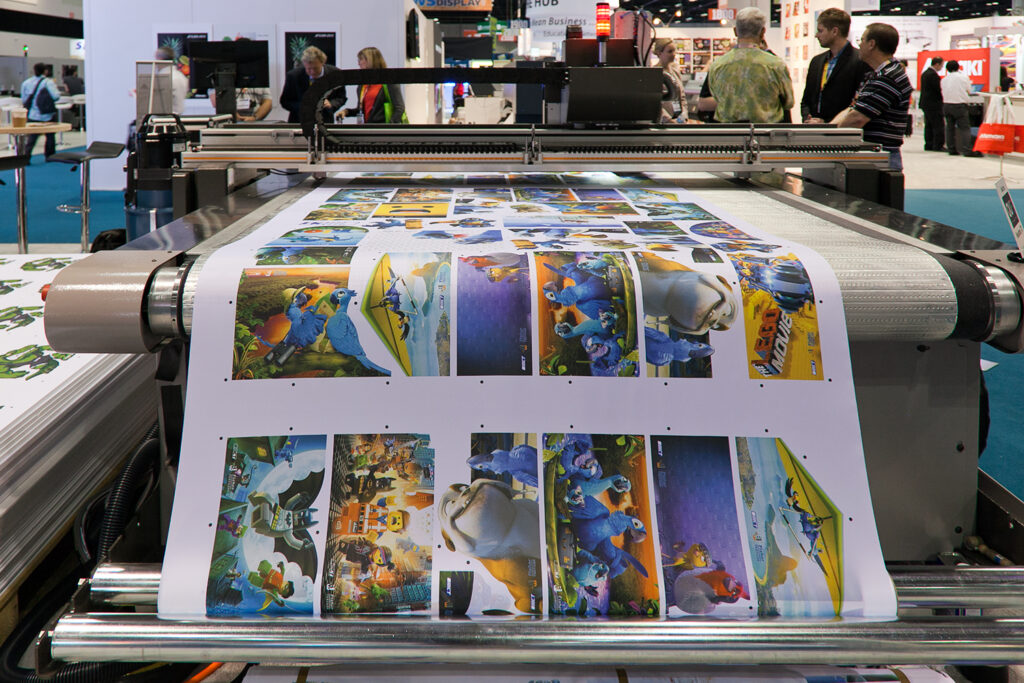
Techniques Used in Digital Printing
Giclée Printing
Giclée printing is a high-quality inkjet process that applies tiny droplets of pigment-based ink to create detailed, vibrant images on canvas or paper. Developed in the late 20th century, this technique achieves impressive color accuracy and durability, making it popular for fine art reproductions and photography. Unlike traditional methods, Giclée uses archival-quality inks that retain color and resist fading over time.
Artists and collectors value Giclée printing for its ability to capture delicate color gradients and intricate details. The process allows customization on different textures, enhancing the viewing experience and providing prints that are UV and environmentally resistant. This blend of precision and longevity makes Giclée printing a trusted choice for premium art reproduction.
Image: The Hippopotamus Hunt by Peter Paul Rubens, printed using Giclée technique. Author: Fountains of Bryn Mawr at English Wikipedia. Licensed under CC BY-SA 3.0.
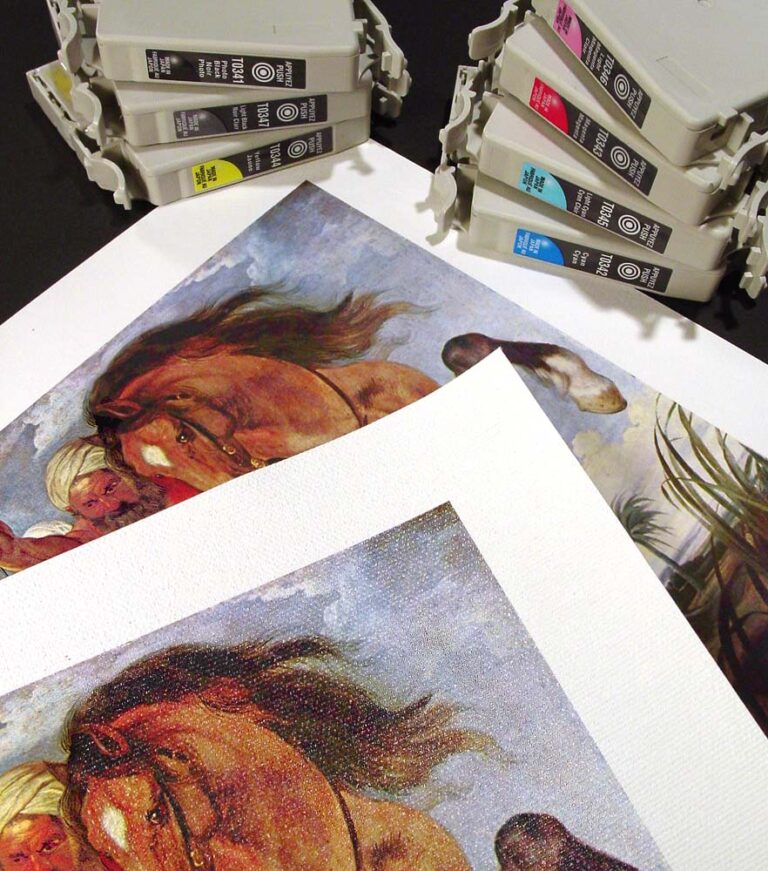
Dye-Sublimation
Dye-sublimation is a vibrant, durable printing process that uses heat to transform solid dye into gas, bonding it deeply within materials like polyester fabric, ceramics, and specially coated metals. Unlike traditional printing, the dye becomes part of the substrate, creating highly resistant prints that don’t crack, peel, or fade.
Known for its sharp, photo-quality results, dye-sublimation is favored for custom-printed items like apparel, flags, and personalized products (mugs, phone cases). It works exceptionally well on synthetic textiles, where colors remain vivid after multiple washes. This durability and color fidelity make dye-sublimation ideal for producing long-lasting, high-quality visuals across various products.
Youtube video: Best Sublimation Printers
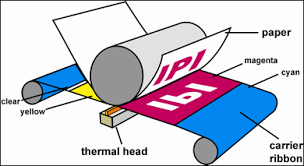
UV Printing
UV printing is a digital technique using ultraviolet light to cure or harden ink instantly on various surfaces. This process allows for vibrant, sharp colors and durable prints, as the ink stays on the surface without absorption. UV printing is versatile, supporting substrates like plastic, wood, glass, and metal, making it ideal for indoor and outdoor applications. The instant curing improves production speed, while eco-friendly, solvent-free inks reduce VOC emissions. This method is commonly used in signage, packaging, and custom promotional products, as its durability ensures lasting results even in challenging environments.
YouTube video: Unveiling Uv Printing Process From Concept To Creation
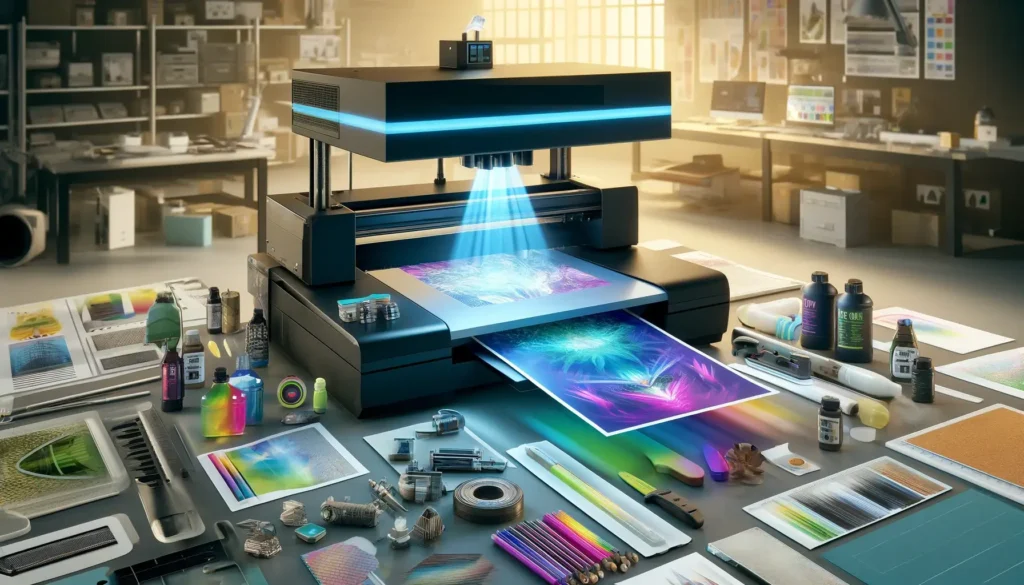
Different Media Types in Digital Print
Digital prints can be produced on a myriad of media types:
- Canvas: Offers a traditional feel with the benefits of digital precision.
- Fine Art Paper: Provides texture and weight, enhancing the print’s depth.
- Metal and Acrylic Sheets: Introduce a modern, sleek aesthetic.
- Fabric: Expands possibilities into fashion and textile art.
The Role of Canvas in Digital Printing
Why Choose Canvas?
Canvas remains a popular choice due to its durability and the classic appeal it lends to modern abstract art and acrylic painting styles replicated digitally.
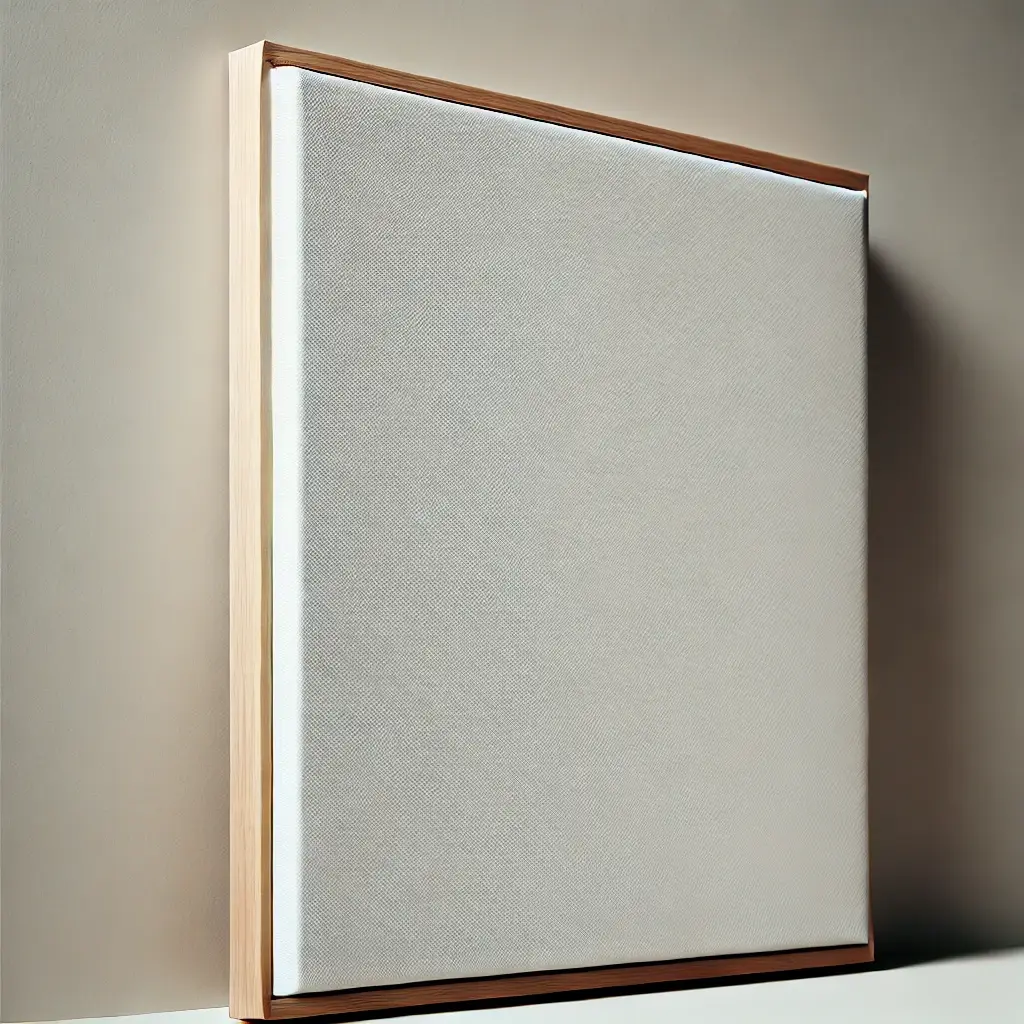
Techniques for Printing on Canvas
Canvas Stretching
After printing, the canvas is stretched over a wooden frame, mimicking traditional painting presentations.
Gallery Wrapping
This involves wrapping the canvas around the sides of the frame, allowing the image to continue on the edges for a frameless display.
Enhancing Digital Prints on Canvas
Artists often add hand-painted details or textures with acrylics to digital prints on canvas, creating a mixed-media art piece that blends technology and traditional methods.
The Fusion of Traditional and Digital
As a proponent of assemblage and installation art, combining digital prints with physical materials creates a tangible connection between the viewer and the artwork.
Techniques in Mixed Media Digital Art
Layering
Incorporating layers of paint, fabric, or found objects over a digital print adds depth and complexity.
Texturing
Applying textures with gels or pastes overprints can simulate the feel of an acrylic painting, enhancing the sensory experience.
Latest Trends in Digital Print Art
Sustainability in Art
There’s a growing trend towards eco-friendly materials and processes in digital printing, aligning with global ecological concerns—a theme prevalent in my work addressing social crises and ecology.
Personalization and Customization
Artists offer customizable prints, allowing collectors to have personalized pieces that resonate on a deeper level.
Virtual and Augmented Reality
Integrating VR and AR technologies expands how audiences interact with digital prints, creating immersive experiences.
The Impact of Digital Print on Contemporary Art
Accessibility and Reproduction
Digital print allows for the reproduction of artwork without compromising quality, making art more accessible to a broader audience.
Preservation of Original Works
High-quality digital reproductions help preserve original artworks, which is essential for pieces that utilize ephemeral materials in installation art.
Biography of Humberto Poidomani
A Journey Through Art
Humberto Poidomani, born in Argentina in 1942, has cultivated a remarkable artistic career. At 82, his passion for art remains undiminished, with over five decades dedicated to exploring profound ideological themes such as social crisis, ecology, life and death, and poverty through his sculptures, paintings, and art boxes.
Diverse Artistic Mediums
Poidomani’s work spans various media, including painting, sculpture, assemblages, and installations. His free-spirited approach diverges from traditional academic art concepts, often embracing a Naïve style characterized by childlike simplicity, bright colors, and a deliberate disregard for conventional perspective and proportion.
Critical View of the World
His paintings, ranging from small to monumental panoramic canvases, consistently display his critical perspective. He creates striking visual narratives with profound figures and scenarios, interspersed with written phrases, including his thoughts and excerpts from classical philosophers and writers.
Innovative Use of Materials
Poidomani integrates reused and found industrial materials in his sculptures and mixed-media art. He employs gestural lines, rich textures, and vibrant colors interwoven with personal and literary references. Echoing the provocative essence of arte povera, he crafts absurd, comical, yet highly subjective combinations of wires, objects, rocks, and fabrics.
Global Recognition
Poidomani’s works have been showcased in prestigious museums, galleries, and art fairs worldwide. With his team of close friends, he oversees the operations of Casa Poidomani Art in Miami, a testament to the global recognition and impact of his art.
Artist’s Statement
“I explore deep ideological themes through diverse artistic mediums, challenging traditional art norms and reflecting on societal issues.”
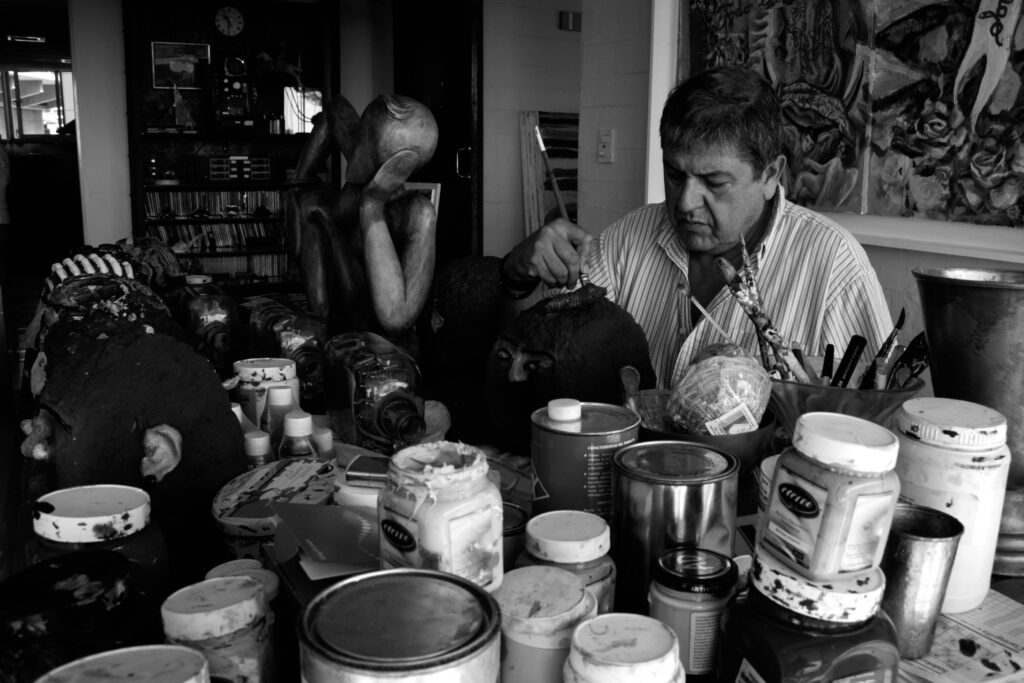
Conclusion
The fusion of digital technology with traditional art forms has opened new avenues for expression and innovation in the art world. As we navigate the complexities of modern society, digital print serves not only as a medium for creation but also as a tool for commentary and reflection.
Through embracing both the latest trends and time-honored techniques, artists like myself continue to push the boundaries of what’s possible, inviting audiences to engage with art in fresh and meaningful ways.
Explore More at Exceptional.Art
Discover a world where traditional artistry meets modern innovation. Visit Exceptional.Art to explore my latest works and delve deeper into the fascinating realm of digital print and mixed-media art.
Resources:
- Digital Print
- Giclée Printing
- Dye-Sublimation
- UV Printing
- Canvas Stretching
- https://www.wikihow.com/Stretch-a-Canvas
- Gallery Wrapping
- Mixed Media Art
- Assemblage Art
- Installation Art
- Abstract Art
- Acrylic Painting
- Naïve Art
- Arte Povera
- Sustainability in Art
- Virtual and Augmented Reality in Art
- Accessibility and Reproduction in Art
- Humberto Poidomani
More About The Evolution of Print: From Ancient Techniques to Gutenberg's Revolution
Printing’s origins trace back to ancient China, where woodblock printing on textiles and paper began as early as the 7th century. By the 9th century, Chinese printers had developed movable clay, which was later improved with metal and wooden components. The oldest known printed book, the Diamond Sutra, was produced in 868 AD using woodblock methods. This innovation spread across Asia, influencing Korean and Japanese printing methods.
In Europe, the technology transformed in the mid-15th century with Johannes Gutenberg’s invention of the movable-type printing press. Gutenberg’s press mechanized the process, using durable metal type and oil-based ink, enabling the mass production of books. His 1455 printing of the Gutenberg Bible marked the beginning of an era that brought knowledge to the masses, fueling the Renaissance, Reformation, and the scientific revolution.
By the 16th century, printing had spread throughout Europe, significantly shaping culture, religion, and education. Over time, printing technology advanced from manual presses to steam-powered machines in the 19th century and further to offset printing and digital methods in the 20th and 21st centuries, revolutionizing global communication and accessibility.
For further reading, you can explore the detailed history of printing here on Wikipedia.
